The Blekingseka is a traditional boat that has its origins in the Blekinge archipelago near Karlskrona on Sweden’s east coast. Eka is the Swedish term for an open boat characteristic of the region, typically featuring a small, raked transom above the waterline. These boats generally have ranged in length from 14′ to 23′.The original 14′ eka, on which today’s building plans are based, was built by Bröderna Mårtenssons Båtbyggeri (Mårtenssons Brothers Boatbuilding) on the island of Östra Hästholmen, an island 6 miles to the southeast of Karlskrona. The boat was commissioned in 1970 by Hans Hanson, a resident of the island. He had ordered it with a motor but removed that shortly after the eka was delivered to him in 1972. The eka was measured and documented by Swedish boatbuilder Bertil Andersson. His plans show how the boat would have been constructed without a motor. The original ekas were built of oak lapstrake planking on oak frames. I built mine glued lapstrake using 9mm Vendia plywood and pine. The construction technique removes the need for frames although I did fit timbers to support the floorboards, and hanging knees to support the gunwales.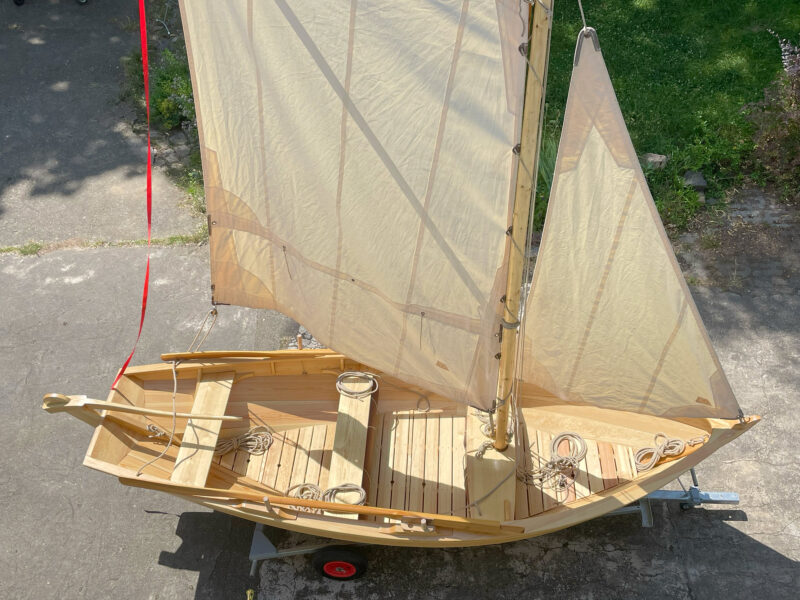 Sebastian Schröder
Sebastian Schröder
Join The Conversation
We welcome your comments about this article. To include a photo with your remarks, click Choose File below the Comment box.



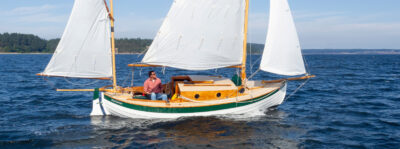
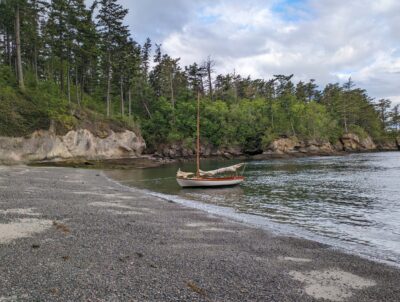



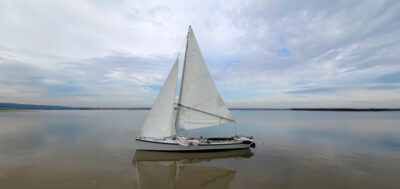

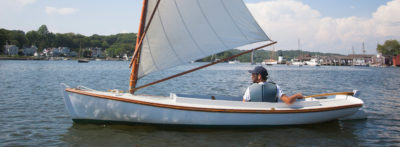
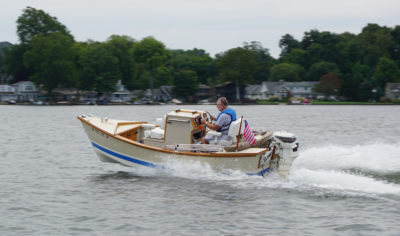
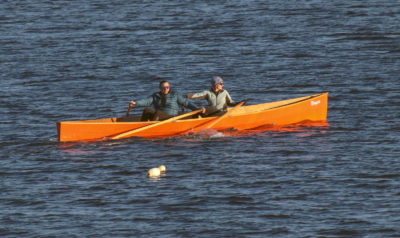
My fascination: how to build a Blekinge Eka. Could you take me through the process? Would be great fun. We have one to repair – and the narrow transom is …. narrow. What is Vendia Marine planking? Sounds attractive. Is it expensive? Sail plan?
All the best!
Hi Olof, thanks for your interest. I have built this Eka in a modern way: It is glued lapstrake. I have some experience in building boats using that method way (designing and building 4 boats so far). I could possibly guide you through the process or at least give you some advice, where are you situated?
The narrow transom is also special in the way of building and repairing.
Vendia Marine planking is a type of boatbuilding plywood made of local Finnish pine. The layers for the boards are cut in slices from the log and look like wooden planks. The material is more expansive than okoume plywood but is very nice to work with in terms of (steam-) bending, cutting, and sanding. The original sail plan is in the plans I bought, but I modified them to have a bigger sail area.
All the best!
The Blekinge archipelago in the southeast of Sweden is home to the Blekingseka and many still abound in the area. Their correct name, Blekingseka, is from “bleke” and “eka”, where eka means small boat and bleke means sheltered waters with no wind, conditions that are often found in the archipelago.
Hi Thomas thank you for explaining the origin of the name.
That is a beautiful hull and a nice job of building. No opportunity to hide errors with a varnished hull. With most of the lateral resistance aft does it track well?
Hi Ronald, thank you. I often sail small boats and am used to correcting course with any slight change of wind, passenger distribution, or heel. The Blekingseka sails so easily and tracks so well, that I find I’m concentrating more on the conversation than on keeping the boat’s course, and we’ve stayed on course, even, twice, in the dark…if there’s moonlight and wind I try to be on the water.
Beautiful boat! And beautiful finish! I am curious what you used that kept it so light. The varnishes and oils I use on furniture all darken the wood. Only lacquers & water based finishes remain light.
Hi, the finish is done with “Le Tonkinois Marine No. 1. The first 6 layers are varnish only and the last two layers are mixed 1:1 with Gelomat to get a matte finish. Le Tonkinois Marine No. 1 has a special UV light protection and gives a light and golden finish at the pine verniers of the Vendia boat planks. It is linseed oil based and behaves like a thin oil.